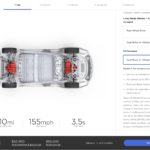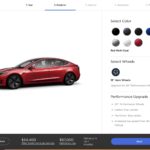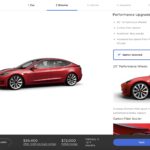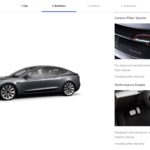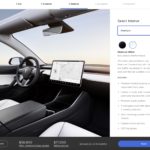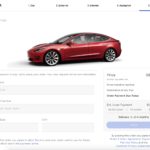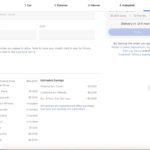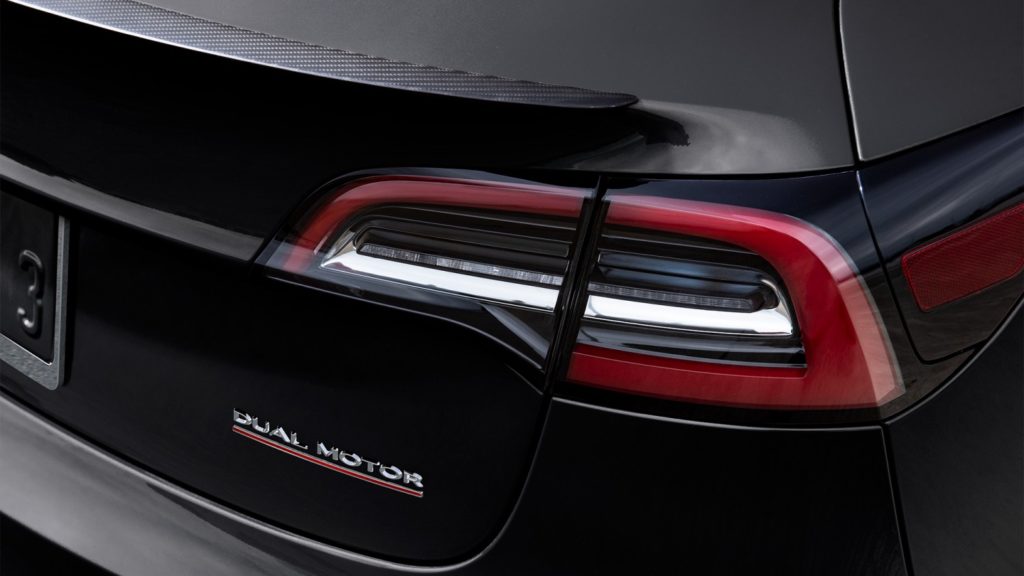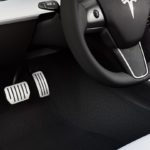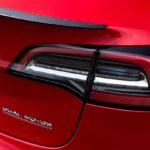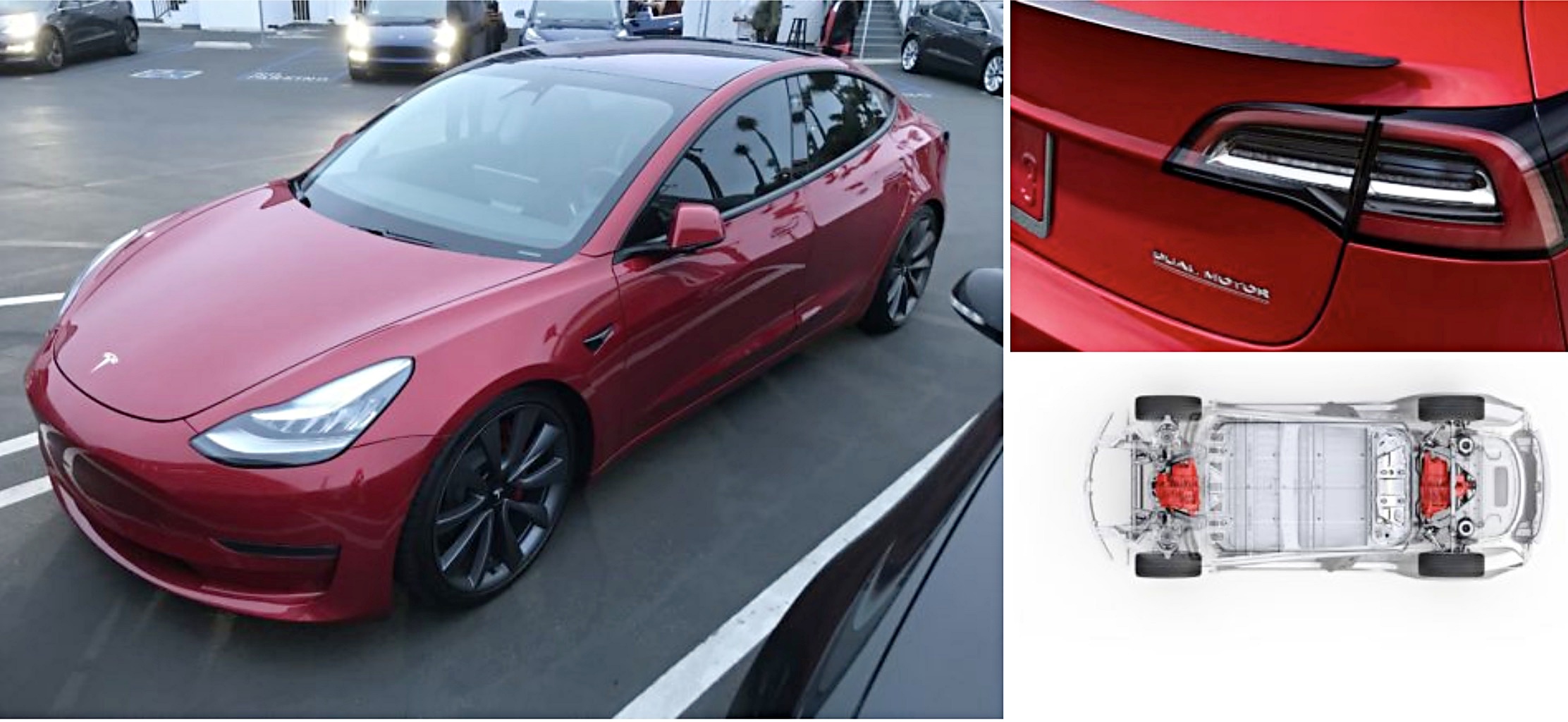
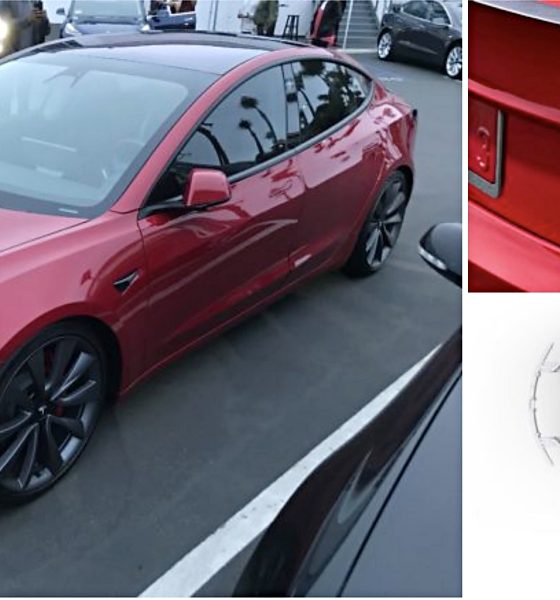
Investor's Corner
Tesla reveals Model 3 Performance “Dual Motor” badge and new pricing
Tesla has given the Model 3 Performance and Dual Motor AWD a considerable price cut. Now, a fully-loaded Model 3 Performance costs $72,000 without Autopilot and Full Self-Driving, $6,000 less than its initial price of $78,000. Buyers opting for the non-performance variant Model 3 with dual motors and a Long Range battery pack can expect to pay $53,000, $1000 less than before. Tesla’s pricing for Enhanced Autopilot and Full Self-Driving remains the same at $5,000 and $3000, respectively, though FSD will cost $5,000 when added after delivery.
Overall, Tesla was able to achieve a significant price drop for the Model 3 Performance by making some of its features (now dubbed as a $5,000 Premium Package) optional, such as its 20″ Performance Wheels, Michelin Pilot Sport 4S summer tires, carbon fiber rear spoiler, aluminum alloy pedals, and a top speed boost that enables the electric car to max out at 155 mph. White seats and premium paint choices are also optional at $1,500 each. Without these, the Model 3 Performance, with its 0-60 mph time of 3.5 seconds and 310-mile range, could be bought for $64,000.
Particularly notable in the screenshots above is Tesla’s inclusion of the company’s Premium Connectivity package, an update that the company announced earlier this week.
“All orders placed before July 1 will receive Premium Connectivity with satellite maps with live traffic visualization, in-car streaming media and over-the-air updates via Wi-Fi & cellular,” reads the description for the Select Interior option in Tesla’s Model 3 Design Studio.
An image in the configurator also reveals, for the first time, that Model 3 Performance Dual Motor will have a “Dual Motor” badge with a red underline that Tesla has made synonymous with performance.
With the price adjustments to the Model 3 Performance, Tesla has managed to make its compact electric car an even more compelling purchase than before. At its original price of $78,000, the Model 3 Performance was already reasonably priced compared to established leaders in the high-performance compact segment, such as the BMW M3, Mercedes AMG C63S, and the Audi RS5, all of which can approach the $100,000 mark when fully loaded (the C63S actually breaches the $100,000 mark). With its adjusted price, the Model 3 Performance, which Elon Musk claimed would be 15% faster around the track than a BMW M3, just became a bargain.
The price drop trickled down to the Model 3 Dual Motor AWD as well. Prior to the recent adjustments, the additional motor for the vehicle cost an extra $5,000. Now, the Dual Motor variant costs only $4,000 more than the Long Range RWD version of the electric car. As of date, the delivery window for the Tesla Model 3 Performance is listed at 2-4 months. The Model 3 Dual Motor AWD, on the other hand, is listed with a 3-5-month delivery window, similar to the Long Range RWD variant of the compact electric car.
The Model 3 is Tesla’s first attempt at making a mass-market vehicle. Since starting production of the electric car in the middle of 2017, however, the production of the car has been beset with challenge after challenge, causing the company to miss its targets for the Model 3’s production numbers. As Q2 2018 ends, however, Tesla is closer than ever to attaining its goal of producing 5,000 Model 3 per week by the end of June, thanks in part to a new assembly line in a massive sprung structure on the grounds of the Fremont factory. In a recent tweet, Elon Musk noted that GA3, one of the Model 3 assembly lines inside the Fremont factory, is practically doing something miraculous. Sightings over the past weekend of lots filled to the brim with Model 3 were also spotted by Tesla fans, suggesting that the company has attained a production pace it has never reached before.

Investor's Corner
Tesla stock closes at all-time high on heels of Robotaxi progress

Tesla stock (NASDAQ: TSLA) closed at an all-time high on Tuesday, jumping over 3 percent during the day and finishing at $489.88.
The price beats the previous record close, which was $479.86.
Shares have had a crazy year, dipping more than 40 percent from the start of the year. The stock then started to recover once again around late April, when its price started to climb back up from the low $200 level.
This week, Tesla started to climb toward its highest levels ever, as it was revealed on Sunday that the company was testing driverless Robotaxis in Austin. The spike in value pushed the company’s valuation to $1.63 trillion.
Tesla Robotaxi goes driverless as Musk confirms Safety Monitor removal testing
It is the seventh-most valuable company on the market currently, trailing Nvidia, Apple, Alphabet (Google), Microsoft, Amazon, and Meta.
Shares closed up $14.57 today, up over 3 percent.
The stock has gone through a lot this year, as previously mentioned. Shares tumbled in Q1 due to CEO Elon Musk’s involvement with the Department of Government Efficiency (DOGE), which pulled his attention away from his companies and left a major overhang on their valuations.
However, things started to rebound halfway through the year, and as the government started to phase out the $7,500 tax credit, demand spiked as consumers tried to take advantage of it.
Q3 deliveries were the highest in company history, and Tesla responded to the loss of the tax credit with the launch of the Model 3 and Model Y Standard.
Additionally, analysts have announced high expectations this week for the company on Wall Street as Robotaxi continues to be the focus. With autonomy within Tesla’s sights, things are moving in the direction of Robotaxi being a major catalyst for growth on the Street in the coming year.
Elon Musk
Tesla needs to come through on this one Robotaxi metric, analyst says
“We think the key focus from here will be how fast Tesla can scale driverless operations (including if Tesla’s approach to software/hardware allows it to scale significantly faster than competitors, as the company has argued), and on profitability.”

Tesla needs to come through on this one Robotaxi metric, Mark Delaney of Goldman Sachs says.
Tesla is in the process of rolling out its Robotaxi platform to areas outside of Austin and the California Bay Area. It has plans to launch in five additional cities, including Houston, Dallas, Miami, Las Vegas, and Phoenix.
However, the company’s expansion is not what the focus needs to be, according to Delaney. It’s the speed of deployment.
The analyst said:
“We think the key focus from here will be how fast Tesla can scale driverless operations (including if Tesla’s approach to software/hardware allows it to scale significantly faster than competitors, as the company has argued), and on profitability.”
Profitability will come as the Robotaxi fleet expands. Making that money will be dependent on when Tesla can initiate rides in more areas, giving more customers access to the program.
There are some additional things that the company needs to make happen ahead of the major Robotaxi expansion, one of those things is launching driverless rides in Austin, the first city in which it launched the program.
This week, Tesla started testing driverless Robotaxi rides in Austin, as two different Model Y units were spotted with no occupants, a huge step in the company’s plans for the ride-sharing platform.
Tesla Robotaxi goes driverless as Musk confirms Safety Monitor removal testing
CEO Elon Musk has been hoping to remove Safety Monitors from Robotaxis in Austin for several months, first mentioning the plan to have them out by the end of 2025 in September. He confirmed on Sunday that Tesla had officially removed vehicle occupants and started testing truly unsupervised rides.
Although Safety Monitors in Austin have been sitting in the passenger’s seat, they have still had the ability to override things in case of an emergency. After all, the ultimate goal was safety and avoiding any accidents or injuries.
Goldman Sachs reiterated its ‘Neutral’ rating and its $400 price target. Delaney said, “Tesla is making progress with its autonomous technology,” and recent developments make it evident that this is true.
Investor's Corner
Tesla gets bold Robotaxi prediction from Wall Street firm
Last week, Andrew Percoco took over Tesla analysis for Morgan Stanley from Adam Jonas, who covered the stock for years. Percoco seems to be less optimistic and bullish on Tesla shares, while still being fair and balanced in his analysis.

Tesla (NASDAQ: TSLA) received a bold Robotaxi prediction from Morgan Stanley, which anticipates a dramatic increase in the size of the company’s autonomous ride-hailing suite in the coming years.
Last week, Andrew Percoco took over Tesla analysis for Morgan Stanley from Adam Jonas, who covered the stock for years. Percoco seems to be less optimistic and bullish on Tesla shares, while still being fair and balanced in his analysis.
Percoco dug into the Robotaxi fleet and its expansion in the coming years in his latest note, released on Tuesday. The firm expects Tesla to increase the Robotaxi fleet size to 1,000 vehicles in 2026. However, that’s small-scale compared to what they expect from Tesla in a decade.
Tesla expands Robotaxi app access once again, this time on a global scale
By 2035, Morgan Stanley believes there will be one million Robotaxis on the road across multiple cities, a major jump and a considerable fleet size. We assume this means the fleet of vehicles Tesla will operate internally, and not including passenger-owned vehicles that could be added through software updates.
He also listed three specific catalysts that investors should pay attention to, as these will represent the company being on track to achieve its Robotaxi dreams:
- Opening Robotaxi to the public without a Safety Monitor. Timing is unclear, but it appears that Tesla is getting closer by the day.
- Improvement in safety metrics without the Safety Monitor. Tesla’s ability to improve its safety metrics as it scales miles driven without the Safety Monitor is imperative as it looks to scale in new states and cities in 2026.
- Cybercab start of production, targeted for April 2026. Tesla’s Cybercab is a purpose-built vehicle (no steering wheel or pedals, only two seats) that is expected to be produced through its state-of-the-art unboxed manufacturing process, offering further cost reductions and thus accelerating adoption over time.
Robotaxi stands to be one of Tesla’s most significant revenue contributors, especially as the company plans to continue expanding its ride-hailing service across the world in the coming years.
Its current deployment strategy is controlled and conservative to avoid any drastic and potentially program-ruining incidents.
So far, the program, which is active in Austin and the California Bay Area, has been widely successful.
